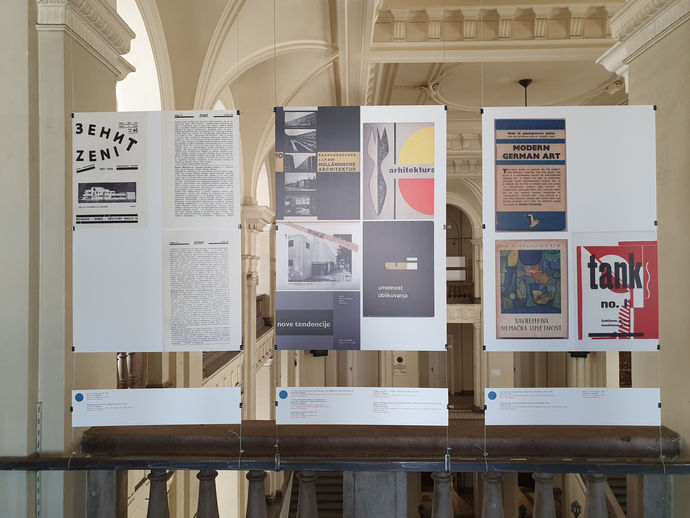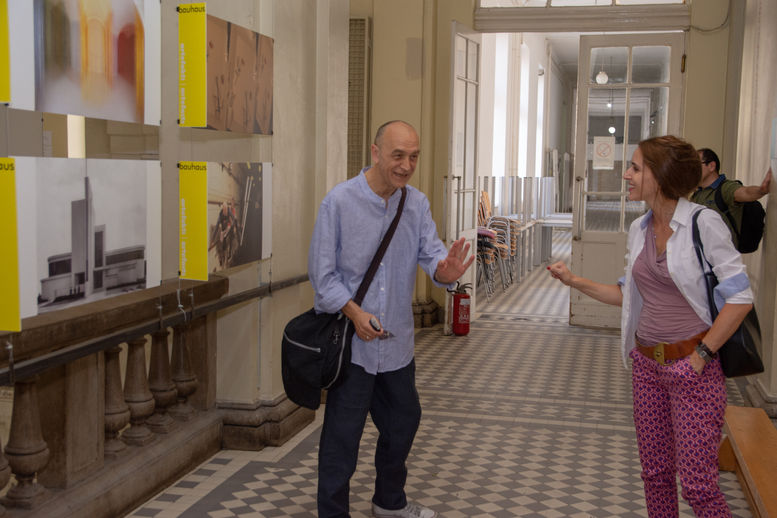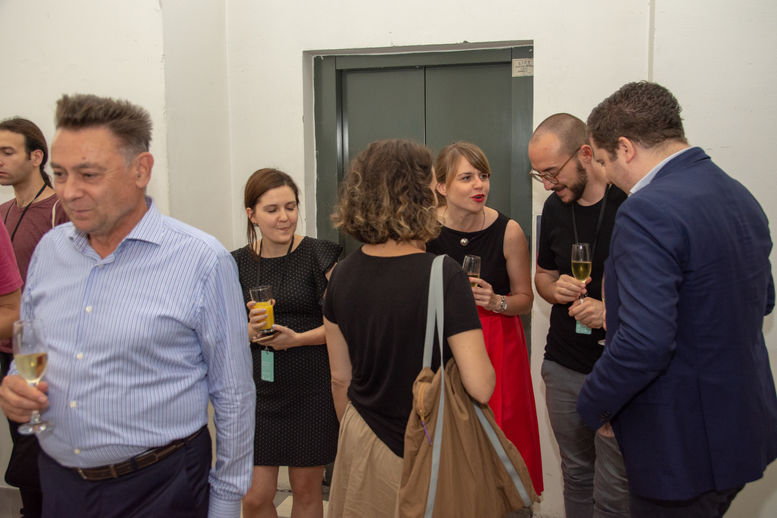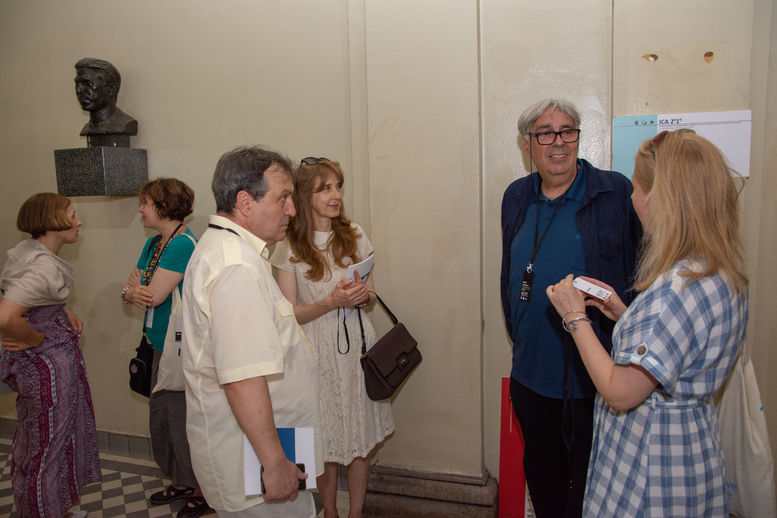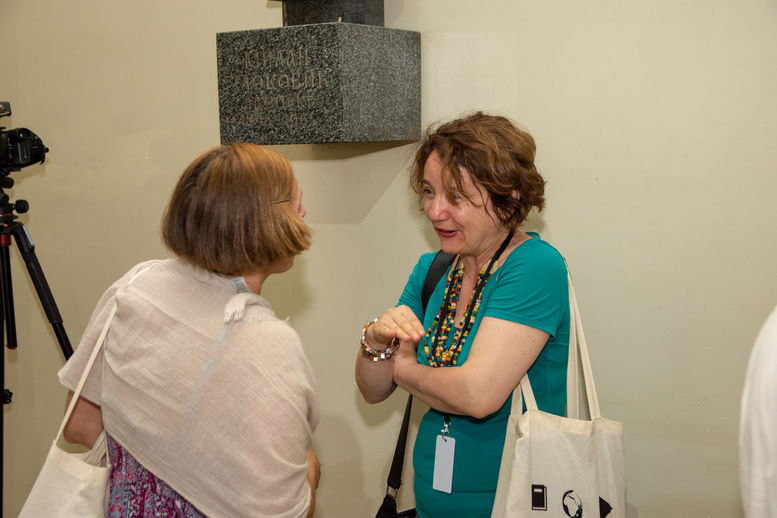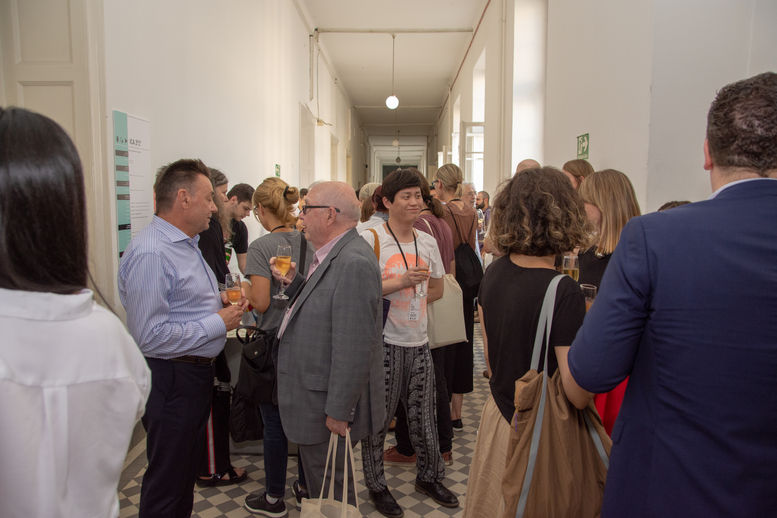ICA 2 1
Belgrade
0 9
21st international congress of aesthetics
Possible worlds of contemporary aesthetics
Aesthetics between history, geography and media
July 22nd-26th
ABOUT ICA
The Faculty of Architecture, University of Belgrade and the Society for Aesthetics of Architecture and Visual Arts of Serbia (DEAVUS) are proud to be able to organize the 21st ICA Congress on “Possible Worlds of Contemporary Aesthetics: Aesthetics Between History, Geography and Media”. We are proud to announce that we received over 500 submissions from 56 countries, which makes this Congress the greatest gathering of aestheticians in this region in the last 40 years. The ICA 2019 Belgrade aims to map out contemporary aesthetics practices in a vivid dialogue of aestheticians, philosophers, art theorists, architecture theorists, culture theorists, media theorists, artists, media entrepreneurs, architects, cultural activists and researchers in the fields of humanities and social sciences. More precisely, the goal is to map the possible worlds of contemporary aesthetics in Europe, Asia, North and South America, Africa and Australia. The idea is to show, interpret and map the unity and diverseness in aesthetic thought, expression, research, and philosophies on our shared planet. Our goal is to promote a dialogue concerning aesthetics in those parts of the world that have not been involved with the work of the International Association for Aesthetics to this day. Global dialogue, understanding and cooperation are what we aim to achieve. That said, the 21st ICA is the first Congress to highlight the aesthetic issues of marginalised regions that have not been fully involved in the work of the IAA. This will be accomplished, among others, via thematic round tables discussing contemporary aesthetics in East Africa and South America. Today, aesthetics is recognized as an important philosophical, theoretical and even scientific discipline that aims at interpreting the complexity of phenomena in our contemporary world. People rather talk about possible worlds or possible aesthetic regimes rather than a unique and consistent philosophical, scientific or theoretical discipline.
Miško Šuvaković and 21st ICA Organizing Committee





NEW EDITION OF
AM Journal of Art and Media Studies
Selected articles from ICA Conference,
Main topic_Aesthetics of media and post-media practices
NEW EDITION OF
AM Journal of Art and Media Studies
Selected articles from ICA Conference,
Session_Contemporary Aesthetics of Visual Arts
Photos 100 Years of the BAUHAUS_Djordje Petković djp.photographia
100 Years of the BAUHAUS: Contextualizations and Re-Contextualizations of the Bauhaus in the Yugoslav Art Space
This exhibition, 100 Years of the BAUHAUS: Contextualizations and Re-Contextualizations of the Bauhaus in the Yugoslav Art Space, was conceived as a diagrammatic, i.e. visual, discursive, and documentary reflection on
-
the Bauhaus as a new school of architecture, design, and art;
-
the Yugoslavs who studied at the Bauhaus;
-
the impacts and receptions of the Bauhaus in the culture of the Kingdom of Yugoslavia, i.e. in Slovenia, Italy, Croatia, Bosnia and Herzegovina, Serbia, as well as in the intersections between Yugoslav and Hungarian culture in the northern Serbian province of Vojvodina;
-
identifications with the paradoxes of an accelerating modernisation, where the Bauhaus featured as one of the leading forces in what was then contemporary high and popular culture; as well as
-
interpretations of the spirit, aesthetics, and cultural impacts of the Bauhaus in relation to conceptual and contemporary art.
The exhibition is documentary and didactic in character.
It features documents, representations of artworks, as well as indexations of traces left by direct as well as indirect influences of the Bauhaus, that is, eclectic compounds of various modernity projects, ranging from the Bauhaus to De Stijl, the Soviet constructivist avant-garde, Le Corbusier’s French modernism, to international Dada – German, Czech, French – and Hungarian activism.
The earliest pieces of information and interpretation regarding the Bauhaus appeared in general surveys and programmatic texts published in the avant-garde journals UT (the manifesto of the artistic group KURI, UT, Novi Sad, December 1922) and Zenit (Walter Gropius, “Internacionalna arhitektura” (International Architecture), and “Knjige Bauhausa” (Bauhaus Books), an unsigned survey, Zenit, No. 40, Belgrade, 1926), the periodicals Letopis Matice srpske (Zoltan Čuka, “Bauhaus”, LMS, Vol. 315, No. 2, Novi Sad, 1928) and Nova Literatura (Heinz Luedecke, “Bauhaus u Dessau” (The Bauhaus in Dessau), Nova Literatura, No. 10, Belgrade, 1929), and the daily Politika (Stanislav Vinaver, “Dom gradnje i Desau – novi rad u kolektivu” (The House of Building and Dessau – A New Kind of Collective Labour), Politika, Belgrade, 28 March 1931). The exhibition Nemačka savremena likovna umetnost i arhitektura (German Contemporary Fine Arts and Architecture), mounted in Zagreb and Belgrade in 1931, featured works by artist-teachers employed at the Bauhaus.
The exhibition 100 Years of the BAUHAUS: Contextualizations and Re-Contextualizations of the Bauhaus in the Yugoslav Art Space is a complex spatial assemblage of visual and discursive ideas evoking a cultural memorialisation of the Bauhaus, its modernist expansion and influences, eclectic combinations of various artistic impacts on the international scene, the case of the Yugoslav correspondences with the idealities of the Bauhaus as a school and style, as well as affective, polemical, developmental, and appropriative approaches to the Bauhaus tradition in conceptual and contemporary art.
Authors of the exhibition:
Nataša Janković, Marko Nikolić, Boško Drobnjak i Miško Šuvaković
Production of the exhibition and catalog:
Nataša Janković
Associate:
Miloš Kostić






